Treatment
Shirodhara
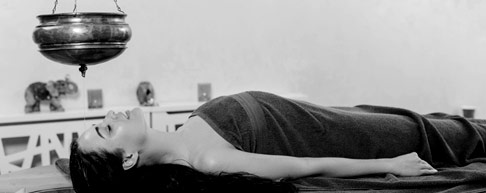
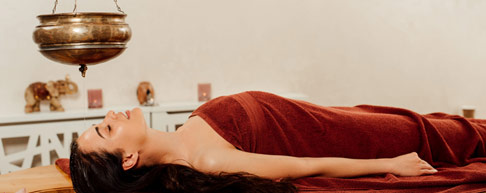
Shirodhara is a form of a classical and well established Ayurvedic therapy that involves gently pouring liquids on the center of the forehead of the patient, resting quietly on a comfortable bed. It can be one of the steps involved in Panchakarma. Depending on the specific need, coconut water, buttermilk, milk, medicated oils are used. The name ‘Shirodhara‘ comes from the Sanskrit words shiro (head) and dhara (flow). The clinical benefits observed with Shirodhara in anxiety, neurosis, hypertension, and stress.
Kizhi
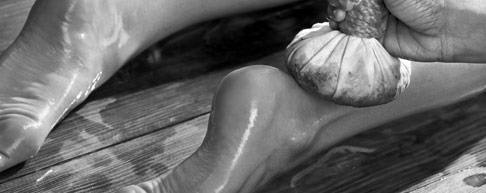
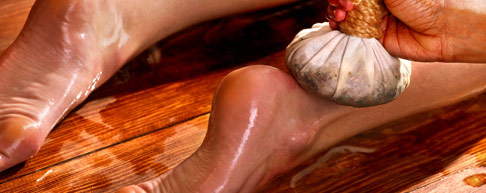
Kizhi treatment is one of the most effective therapies in Ayurveda. It is used for the treatment of several common and chronic ailments and is basically a part of Panchakarma. Kizhiayurveda treatment is a complete healing therapy that purifies and rejuvenates the body, mind, and soul. The term “Kizhi” is taken from Malayalam language from South India. It’s an Ayurvedic massage therapy. Kizhi keeps your skin smooth and toned. The continuous practicing of Kizhi assures youth forever.
Padabhyanga
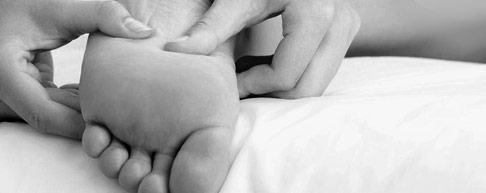
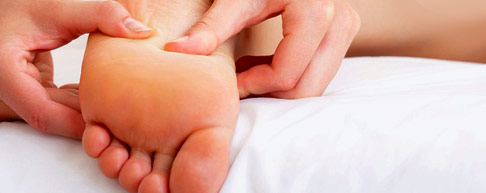
Foot massage is called "Padabhyanga" and it has a very special place within the Ayurvedic tradition. It is commonly practiced as a daily ritual, especially before retiring at night. Padabhyanga includes massage of the feet. Feet are very important part of our body, as many nerves from many organs terminate in the feet. So massage helps to strengthen these nerves as well as many parts of the body. The marma (vital) points are massaged which gives balance to your doshas and is very helpful for people with insomnia, fatigue and cramps.
Akshi Tarpana
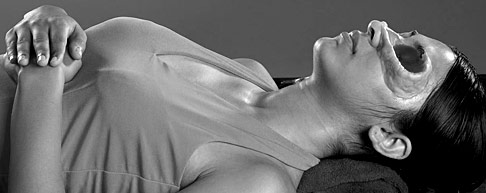
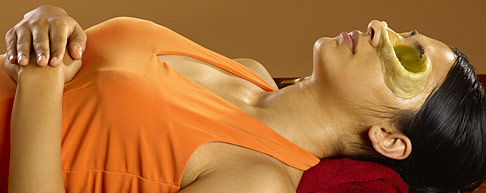
‘Akshi’ means eyes, Tarpan means nutrition. This process is done with different herbal medications in certain eye diseases. In this process the patient is asked to lie down on the table comfortably. And the eye is filled upon with medicated oil or ghee for a certain period. Then a circular boundary is made with around the eye socket by using dough. Then the slightly warmed medicated oil is slowly poured in this cavity, while keeping the eyes closed. During this process the patient is asked to open and close the eyes frequently, so that the drug may remain well in touch with eyeball. It improves visual acuity.
Katibasti
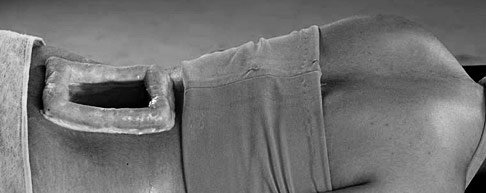
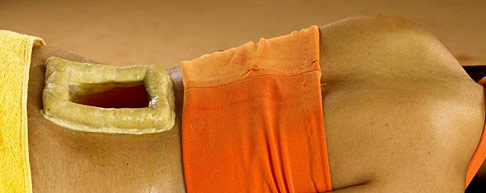
Kati Basti is a musculoskeletal treatment for disorders that involve muscle (mamsa), ligaments, bones (ashti), vertebrae and nerves (majja). Symptoms associated with such disorders are inflammation, pain, stiffness and restricted movements. Kati Basti is a specialized technique in which warm medicated oil is put on Kati (lumbosacral region) for a specified period of time (say 40 to 45 minutes) whiles the patient is lying prone. This is done 7 to 15 days based on the severity. After Kati Basti patients show improvement in symptoms like low backache, pain thighs & legs, difficulty in walking, numbness soles & legs.
Greevabasti
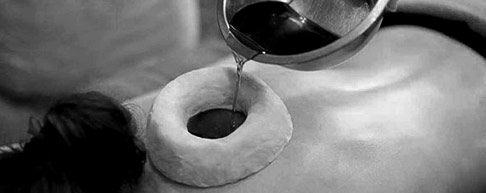
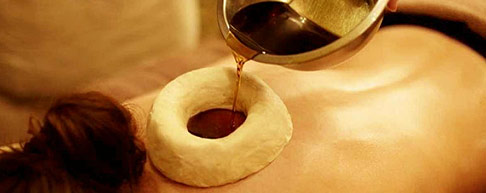
Due to present day lifestyle that involves continued sitting, problems of the spine, muscles and skeletal tissues of neck and shoulder arise.The phrase GreevaBasti is from Sanskrit. The word Greeva refers to neck and Basti stands for container or retaining something inside. It is an Ayurvedic neck care and basically a hot oil therapy. GreevaBasti is bathing the neck region with medicated oil or freshly prepared herbal decoction. The procedure does oleation and sudation around the neck region simultaneously. It reduces inflammation, lubricates the cervical joints. Greevabastiimproves blood circulation in neck area and removes spasm& stiffness.
Janubasti
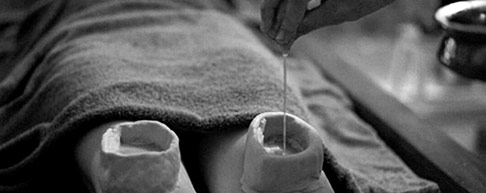
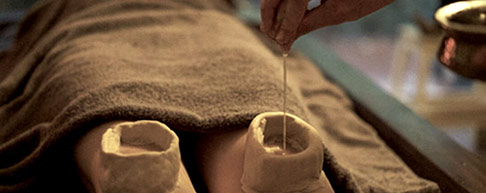
The knee joint is called JanuSandhi in Sanskrit; hence the name JanuBasti is given to the procedure done on knee joints. In this the knee area is massaged with the oil and then a dough or reservoir is made on the kneecap. Warm medicated oil is then poured and pooled for some time. Depending on the condition it can be practiced over both the knee joints or on one knee joint. Knee joints are considered as sandhiMarma in Ayurveda (joint type of vital areas) which measure about three fingers (three angulipramana). So the JanuVasti is specialized knee therapy or massage which rejuvenates the janumarma.
Abhyanga
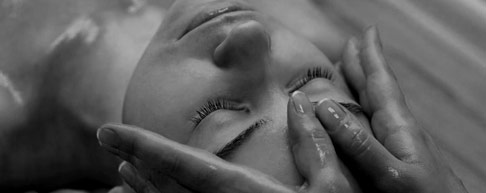
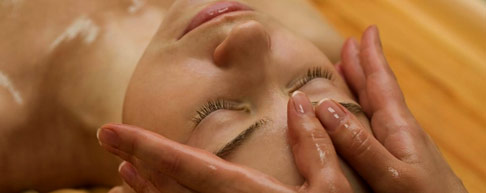
The Ayurvedic oil massage — is an integral part of the Panchakarma. Traditional Ayurvedic textselaborately explainthe benefits of Abhyanga. The therapy may be done by a single therapist or by a team of two. The entire body is oleated, including the scalp and feet. Herbal oils are used for the massage and essential oils are applied to specific energy points, if needed. In some cases, medicinal nasal drops are administered and warm oil is put into the ears.Abhyanga, loosens the metabolic waste materials and brings elasticity to the tissues.
Thalam
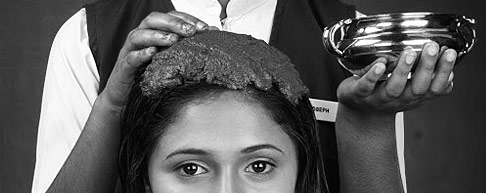
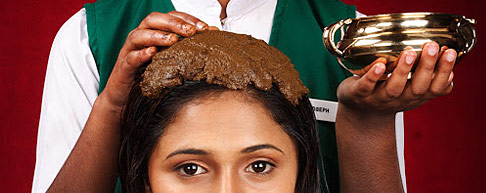
In Ayurveda, there are perfect remedies for mental abnormalities and neurotic disorders. Ayurveda ensures guaranteed result for all such ailments. Thalam is an Ayurvedic therapeutic remedy. Selected herbs are used to make the Ayurvedic oil. The herbs are boiled with oil and then it is converted into a medicated paste. This paste is then applied to the top of the head and left there for about 20-minutes. Thalam enhances and nourishes the brain cells. It’s a very effective in curing insomnia, stress, and different kind of mental conditions.
Shirobasti
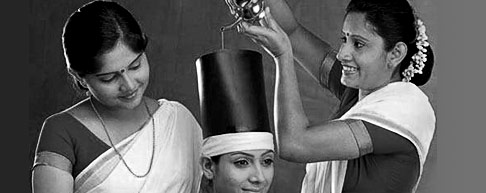
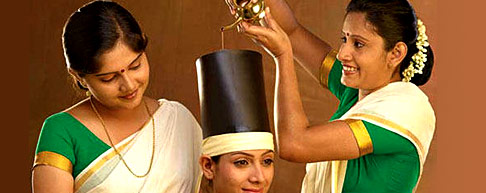
Shirovasti is an ayurvedic therapy or procedure in which outer area of head is covered by a leather cap keeping hollow inside to put oil in it for a certain period in such a way that oil should not be leaked out. Shiro means head and Vasti means container. Shirovasti is used for the treatment of diseases concerned to the head, brain and neurological diseases. It is also beneficial for lowering stress and building immunity against psychosomatic diseases. Shirovasti is categorized in Ayurveda as external Snehana (Oil is used) or external oil application to treat an ailment. It is a part of Panchakarma, a sub-branch of Ayurvedic internal medicine.


